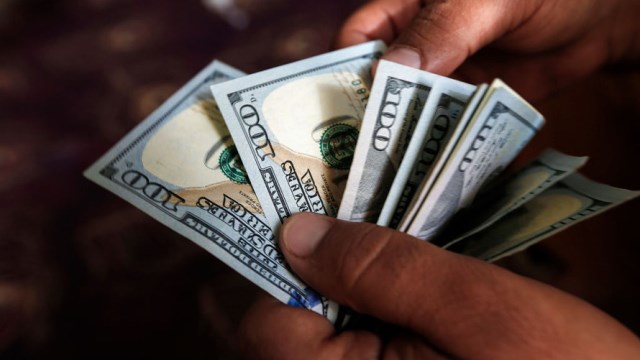The dollar dipped in Thursday afternoon trade ahead of Friday’s U.S. government jobs report, which is forecast to show slowed growth and will inform market expectations of interest-rate cuts in 2019.
The U.S. Labor Department’s non-farm payrolls report includes public and private-sector employment, both of which are expected to have dropped in May, according to a Reuters poll of economists.
A slowdown was evident in the ADP National Employment Report released on Wednesday, which showed private U.S. employers added 27,000 jobs in May, well below the 180,000 forecast in a Reuters poll forecast and the smallest monthly gain in more than nine years.
“The downside surprise in the ADP report implies downside risks around our forecast as well as the consensus expectation for the non-farm payrolls report on Friday, which both fall out of the average error range of the ADP report,” wrote analysts at Morgan Stanley.
The dollar index was last down 0.30% at 97.030, continuing its downward trend this week as weak data, continued trade tensions and dovish comments from Federal Reserve members have raised expectations of interest-rate cuts.
Accelerating the dollar’s slide on Thursday was a jump in the euro after the European Central Bank stopped short of suggesting an interest rate cut and instead pushed back the timing of its first rate hike since the 2008 financial crisis.
The euro rose because investors had expected an even more dovish signal from the ECB and an acknowledgement of weak economic growth in the bloc. The single currency was last 0.49% higher at $1.127 after brushing a 1-1/2-month high of $1.131 earlier this week.
The ECB “is taking a more proactive approach, rather than the wait-and-see approach you’re seeing from the Fed,” said Minh Trang, senior foreign exchange trader at Silicon Valley Bank.
That has led the euro to rally and the dollar to fall because “if (the Fed) is behind the curve, they’ll have to make more drastic moves if the economy turns on them,” said Trang.
“If you look at the last six months, (the Fed) has been behind the curve. The market began pricing in a (U.S.) rate cut six months ago.”
Money market futures are now pricing in a 45% chance of a 10 basis point euro zone rate cut by the end of year versus 75% before the ECB statement.














